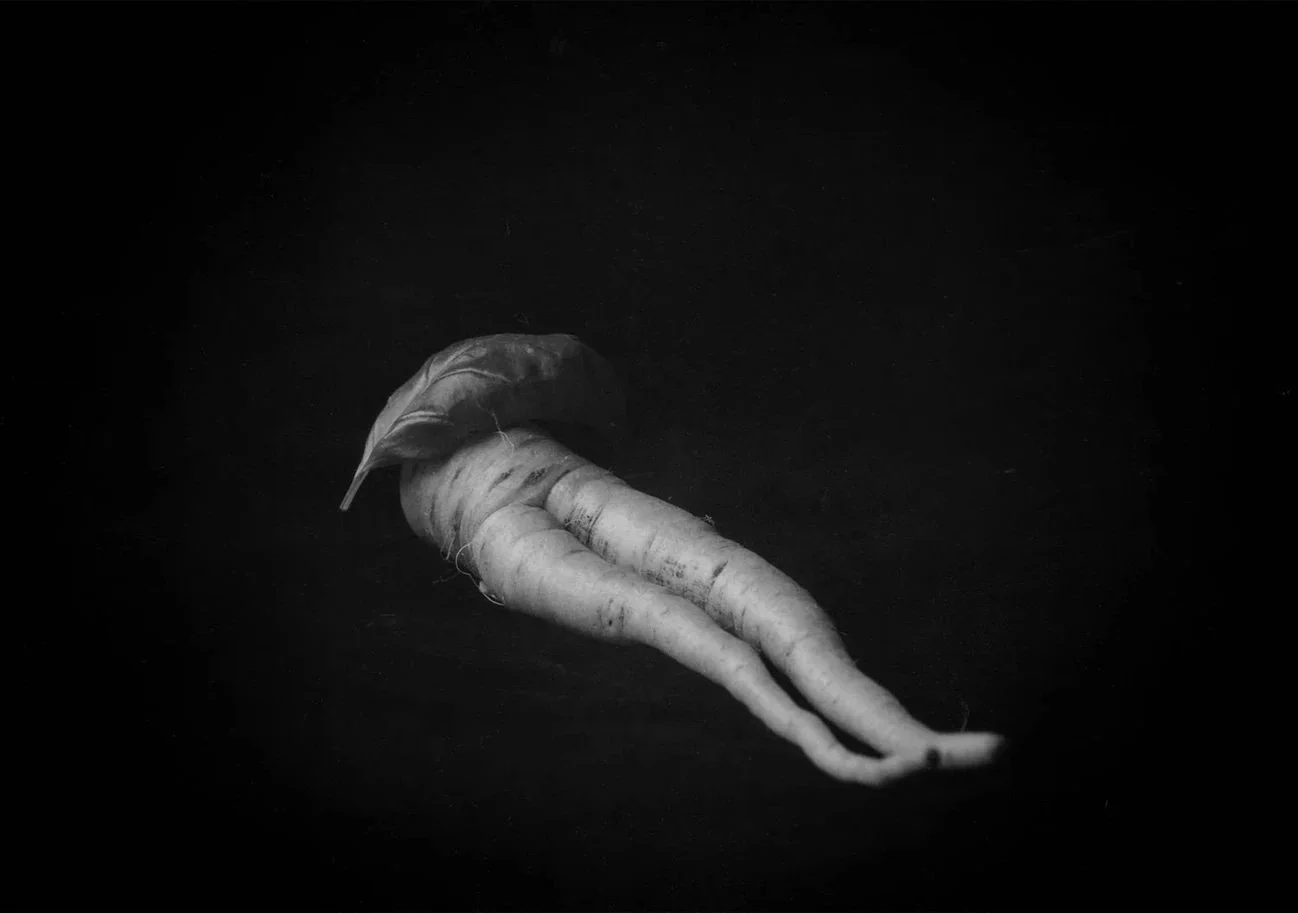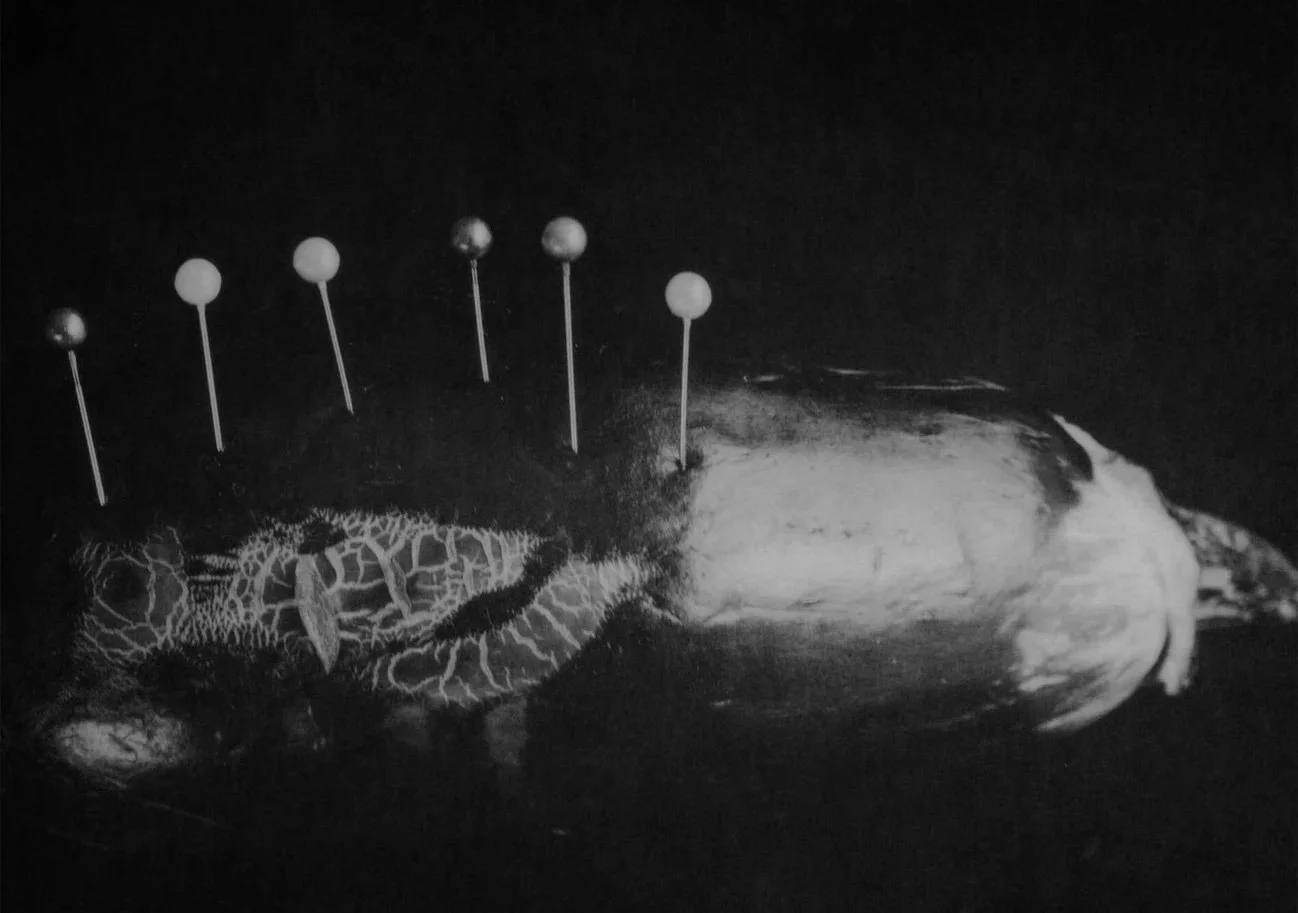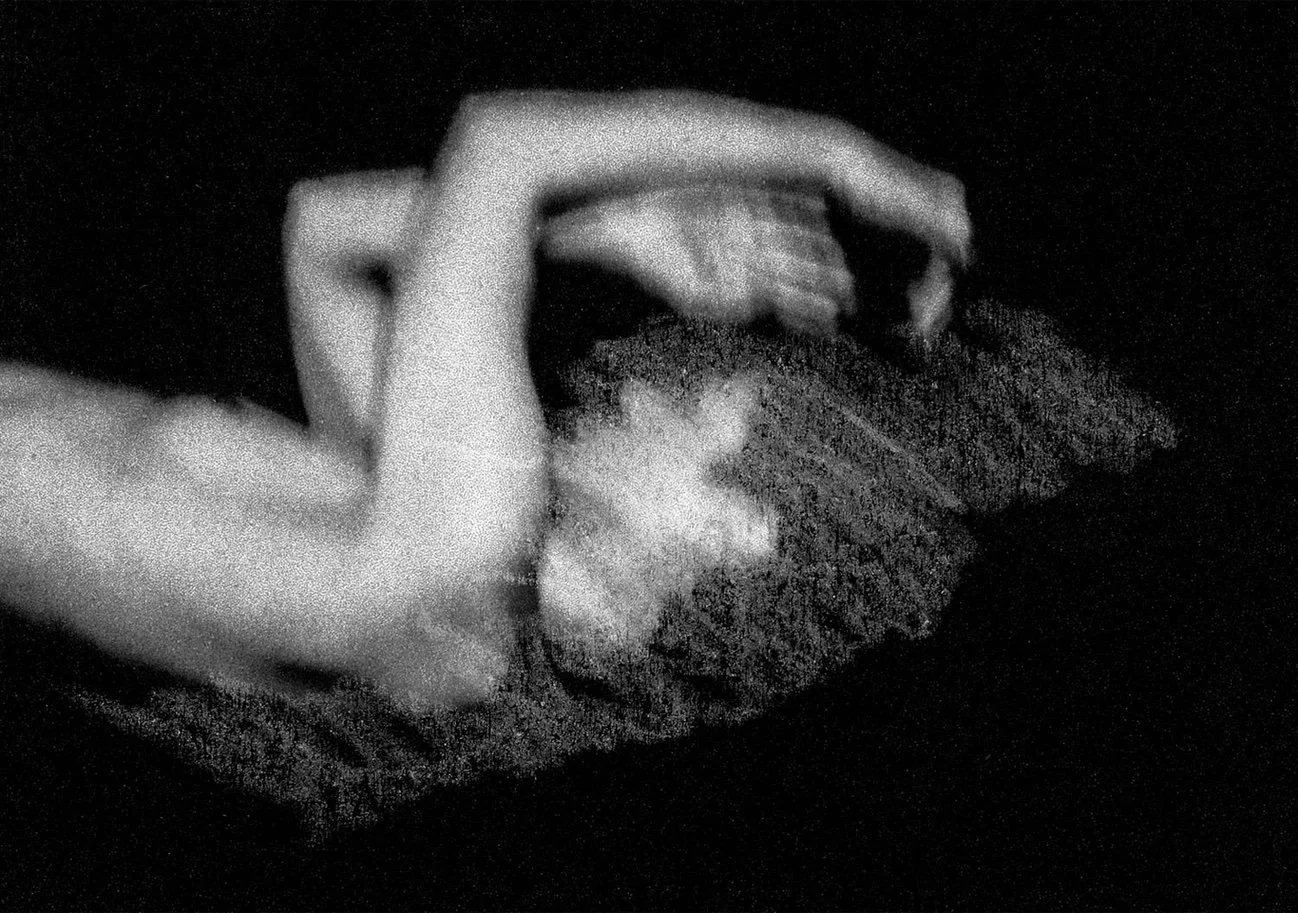Mayumi Suzuki – HOJO
During the opening week of Les Rencontres d'Arles, I had the pleasure of meeting Japanese artist Mayumi Suzuki at the Café de l’Hotel du Nord. She had just finished participating in a round table discussion about Japanese artists' responses to natural cataclysms, where she shared insights from her 2017 project, The Restoration Will, exploring the disappearance of her parents after the 2011 tsunami of the Oshika Peninsula. Today, we sat down to discuss her newest series, HOJO, featured in the group show Transcendence, presenting the work of six Japanese female artists exploring photography as a tool of affirmation and resilience.
All images courtesy of Mayumi Suzuki.
Anna Prudhomme: What inspired the title 'HOJO' for your project?
Mayumi Suzuki: The title HOJO comes from the Japanese kanji meaning "fertility," which is often associated with celebrating the harvest and refers to an abundance of land. In Japan, women have traditionally been worshipped as goddesses of HOJO. The idea of being blessed with abundant crops and many children has been associated with them. However, "fertility" sounds odd in English and isn't appealing as a title. My mentor suggested HOJO because it has an aesthetically pleasing pronunciation and encourages curiosity.
AP: HOJO is a series composed of nude self-portraits, sonograms, and photographs of oddly shaped vegetables. What is the first photograph you captured?
MS: The first photograph in the series is the carrot legs, which is featured on the cover of the photobook. Initially, my idea was simply to take photos of vegetables. I hadn't considered showcasing my infertility experience because it's very private, and I'm too modest to share it publicly. So, I never intended for my personal experience to be revealed. For about 5 or 6 months, I continued to photograph vegetables as a hobby, without the intention of making it a project. During summertime, I photographed eggplants, cucumbers, peppers, and more, often incorporating needles. I pierced the eggplants with needles or sometimes added lace or other materials.
AP: Why needles?
MS: I don't know, I just felt like doing it. At that time, I had already given up on my infertility treatment, but deep down, maybe I wanted to treat myself or acknowledge my femininity. Perhaps that feeling influenced me to pierce the eggplants with needles or add something meaningful to them. It's not depression, but more like a common feeling of frustration. People sometimes hurt themselves to cope, but I channeled that into my art instead.
AP: You were interested in finding vegetables that had weird shapes, the ones that were not sold at the market. How did you find those?
MS: I love cooking and often visit markets, especially farmer's markets. I talk to the vendors sometimes, and I noticed that no one buys the funny-shaped carrots, radishes or cucumbers. Sometimes they look cute, like humans or animals. So, I just ask the vendors if I can have them. They often give them for free or charge a small amount, like €1. During the COVID-19 pandemic, with nothing much to do while staying at home, I started collecting and photographing these unique vegetables.
AP: How would you link the photographs of the vegetables with your personal story?
MS: That's a great question. One day, a friend of mine, who had a similar experience with infertility, suggested I create a self-portrait. She was also a photographer and had given up trying to have a baby. Her suggestion sparked an idea for me. I began combining self-portraits with vegetable portraits. I wanted to explore how to tell my story through these images. Initially, I was hesitant and felt embarrassed about posing in a way that mirrored the vegetables. But I decided to proceed and photograph myself in these poses. The challenge was that I’m neither a dancer nor an actress, so striking the right poses and conveying the right emotions was difficult.
The process became a way to symbolize the struggles and experiences of women dealing with infertility. I was surprised by the little time doctors use to examine patients in preparation for IVF, so I decided to photograph my nude body using the same exposure time: 60 seconds. This long exposure time creates a natural light effect and a black background, but also represents the complex emotions involved in the medical process. The idea was truly to reflect the discomfort and vulnerability often felt during medical examinations, mirroring the emotional landscape of infertility treatments.
AP: Is there a meditative quality to the work?
MS: I think there is. Some images come out quite blurry or shaky, but this actually helps convey the emotional depth of the experience. The blurriness and the long exposure times work well to express the feelings I wanted to capture.
AP: Can you remember the first self-portrait you took for this series?
MS: The first self-portrait was one where I was lying down. It was at the beginning of the series, the first of several images. Lying down was easier to maintain than standing. At that moment, I could only focus on staying still.
AP: I’ve noticed that some images in the book are in color. Can you walk us through the process?
MS: The creative process involves combining three key elements: the vegetables, the self-portraits, and evidence from medical experiences. My goal was to weave these elements into a cohesive narrative. I worked closely with my mentor, Joerg M. Colberg, a German photographer, editor, and critic based in the United States. We had regular Zoom meetings—several each month—where he provided valuable feedback and guidance on structuring the project. His input was crucial in determining the order and presentation of the images.
For instance, the blue frozen egg images were designed to reflect a sense of completion. The series starts with one egg and progresses to a second, symbolizing the stages of treatment. This chronological approach helps to narrate the journey through the treatments.
AP: If it does not feel too uncomfortable for you, could you tell me a bit more about the treatments?
MS: Yes, I attended treatments regularly over that year and a half before deciding to give up, making it a significant part of my life during that period. The process was demanding and constantly on my mind. Many people continue trying for three or four years, but for me, the decision was influenced by the fact that I had not planned for this before turning 40. I had never questioned whether having a baby is a joy for women. Before my birthday in August, I considered that if I didn't try now, I might never have the chance again. I discussed it with my husband, and we decided to make one last attempt due to the time constraints and age limits.
In Japan, infertility treatments are a sensitive topic. Many women go through them, but it's not commonly discussed. It's not exactly a taboo, but it's considered a very private matter, and people rarely talk about it openly. In my circle of artist friends, —who are somewhat unconventional—, the topic was less restrained, so I felt somewhat more at ease discussing it. Had I been in a more traditional community, perhaps where many people are focused on family life, I might have felt differently about pursuing motherhood. But for me, it was an exciting opportunity to try before it was too late. In this day and age, women can choose how they want to live. But sometimes they have to accept a fate that they have no control over. Even if my own body is not "fertile," I want to be proud of it because this is my life.
AP: This was your first time doing self-portraits, correct?
MS: Yes, let’s say it was… [laughs]
AP: What was your relationship to seeing yourself in the photos? How did it feel compared to other photography?
MS: It was a unique experience. I wasn't focused on achieving traditionally beautiful images; instead, I concentrated on capturing authentic poses and expressions. I tried to convey raw emotions, such as crying, and I struggled with the physical challenge of holding poses and avoiding movement, which often resulted in blurred or shaking images.
AP: Do you think you’ll continue with self-portraits in the future?
MS: No, for me, this project feels complete, and I’m no longer interested in pursuing it. This project served as a form of closure. It allowed me to process and express the complex emotions associated with my experiences. With the treatments behind me and the decision made, this project helped me come to terms with that part of my life and move forward.
AP: In 2016, you released a book titled The Restoration Will, about your family in the aftermath of the 2011 Tohoku devastation. For your next project, you’re returning to your hometown, Onagawa. Could you tell us more about this new work?
MS: For this new project, I’m focusing on documenting the history of Onagawa, a town near the ocean that has faced several tsunamis over the years. I have already gathered materials for this project, including photographs I took each time I returned to my hometown for the past ten years. I captured various scenes, and I’ve also collected archival photos from friends and local sources but also broader images of the town and its history. It's a mix of snapshots and more formal portraits, capturing both personal and communal experiences. The challenge now is to find the best way to edit and present these materials.
AP: What kind of town is it, and what historical events are you focusing on?
MS: The town is a fishing industrial area, and it has been hit by multiple tsunamis throughout its history. My grandfather moved there in 1930, and just three years later, the town was struck by a tsunami. Despite the destruction, he rebuilt the photo studio that he ran there, right after. Another major tsunami struck in 1960, originating from Chile. This disaster caused significant damage but, fortunately, did not result in any deaths. At that time, my father, who was 21 years old, was working alongside my grandfather at the photo studio. After the tsunami, they rebuilt the studio once again. If I had been in their place, I would have moved away. I find it hard to understand how they persisted in living there. My grandfather’s experiences, including rebuilding after the tsunamis, have greatly influenced my perspective. After the 2011 disaster, I started researching my town's history and discovered articles about the 1933 tsunami, which I hadn’t known about before.
AP: How have you approached gathering and using archival materials?
MS: I’ve been collecting materials from friends and local archives over the years. Unfortunately, many of my own family photos were lost due to the tsunamis, so I rely on the images and stories of others. I’ve asked local residents and friends about their experiences, but some are hesitant or unsure why they are being asked. Despite this, many express a deep sense of pride and attachment to their hometown and its resilience.
AP: What challenges are you facing in the project?
MS: The main challenge is how to present the story of the town in a way that resonates with viewers. Unlike my previous personal projects, which were more straightforward, this project involves a broader historical and communal perspective. Finding a balance between personal and collective narratives is difficult.
AP: Do you think this project could also impact the community in some ways?
MS: It’s true. By documenting and sharing these stories, I aim to contribute positively to the community. The project is a collaboration with local residents, and I believe it will help preserve and honor their experiences. While there are always risks with such projects, I aim to foster a greater understanding and appreciation of the town’s history and resilience.





